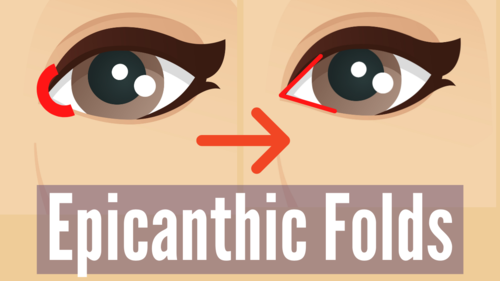Today, I want to discuss the concept of an "epicanthic folds" and how we can address it. I recently learned about this term from a viewer, and I'm grateful for their input. Essentially, an epic fault refers to a particular line or angle around the eye that some people find concerning. It's like the skin is folded downward instead of being open. To create a more defined and open appearance, we can focus on exercises and techniques to improve this condition. One possible cause for the folded skin is excessive tension and weight in the area, which causes it to droop. We'll explore exercises to relieve this tension and work towards breaking it down.
1. Muscle rocks breakdown
Focuses on breaking down muscle tension and knots. I previously covered this exercise in a video, so check it out for more details. Start by using your knuckle on the dominant side of your face, as it's easier to locate the muscle knots. Use your other hand to prevent wrinkles while searching for these tiny dots of tension, similar to the size of a piece of rice. Once you find them, apply pressure and work on reducing them for about a minute. It may be painful, but that's a good sign as you're getting closer to the knots. Repeat the process on the other side, targeting the dominant eye, which typically has more and larger knots. Move your knuckle in a rhythmic motion to break them down. Over time, the goal is to reduce these knots and alleviate the tension caused by prolonged screen and device use.
2. Lift up eye socket
Exercise number two involves lifting up the eyelids. Place your fingers on the inner corner of the eyelid and gently lift it upwards. You can use both fingers simultaneously if you prefer. Ensure that you're not creating wrinkles while lifting. Holding the wrinkle can cause the lid to open slightly, but it's important to avoid creating wrinkles. Lift the eyelids for one minute, being careful not to stretch them excessively. You can also try lifting them in a repetitive motion if that feels comfortable. Avoid wrinkling your forehead during the exercise. After around one minute, you may feel a sense of openness in your eyes.
3. Nose exercise
Now let's focus on the nose area. Lifting the nose upward and outward can create a more defined look. We often hold tension in this area as well. For nose exercises, let's begin with the top portion only. Perform a gentle massage for one minute, moving the fingers outward. Avoid creating wrinkles during the exercise. Be cautious not to apply too much pressure. On a different note, we are planning to host a Face Olympics event, inspired by the Tokyo Olympics. It's an unofficial celebration and not affiliated with the actual Olympics, but it's a fun way to commemorate the Tokyo Games since I'm from Tokyo.
4. Eye exercise
This is the final exercise, which is not a massage but an eye exercise. Open the inner corners of your eyes gently, ensuring there are no wrinkles. Move slightly outward to avoid causing wrinkles. Lift your eyes without stretching the skin too much. Slowly squint and then open, repeating this motion 10 times. Perform three sets of 10 repetitions. It's important to do these exercises consistently for potential results. The previous exercises included breakdowns and lifting the eyelids. Remember, if you try these exercises just once, you may not notice significant changes. However, practicing them regularly, ideally every day, may yield better results.
Summary
These exercises target different areas to improve eye appearance and reduce tension. The first exercise focuses on breaking down muscle knots and tension in the face, especially around the eyes. The second exercise involves lifting the eyelids to create a more open and defined look. The third exercise concentrates on the nose area, providing a gentle massage to release tension. Lastly, the fourth exercise is specifically designed to work the muscles around the eyes, promoting openness and relaxation. Consistency is key when performing these exercises to potentially see noticeable improvements.

